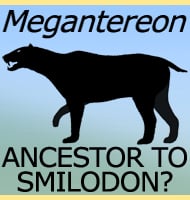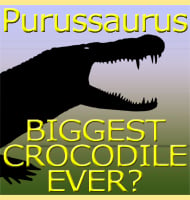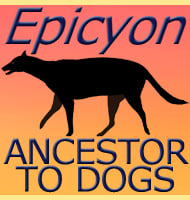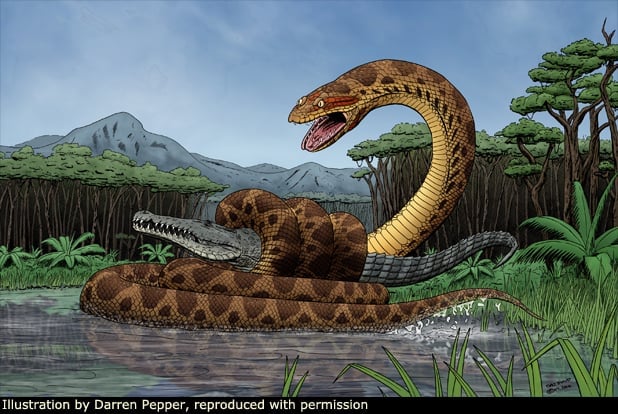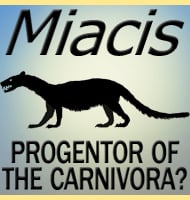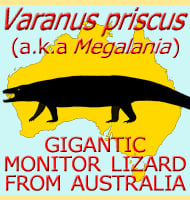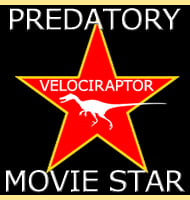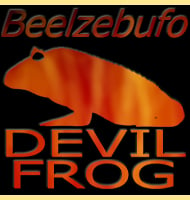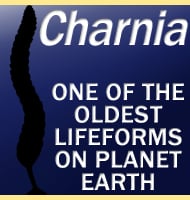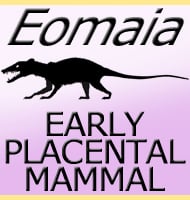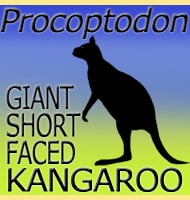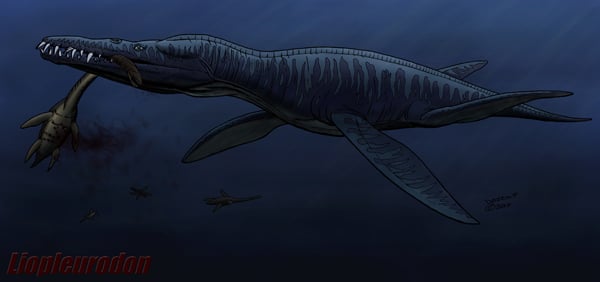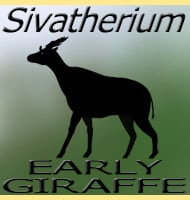


Top Ten Predatory Mammals
A look at ten of some of the most dangerous mammalian predators to ever stalk the land. Much more detailed information is available upon each of these creatures, just click the names to go to them.
10 - Barbourofelis
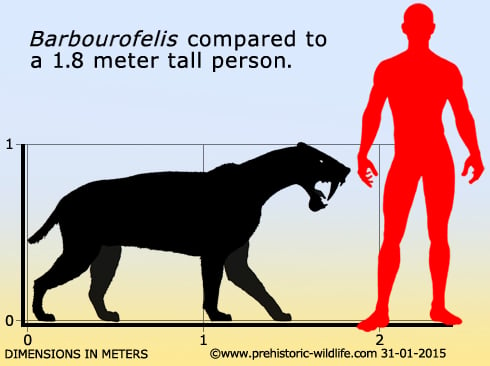
Barbourofelis gets a mention on the grounds that it is the largest of the ‘false sabre-toothed cats’, so called because they were not actually cats at all, they just looked a lot like them. Barbourofelis was a particularly large individual with a powerful build that suggests it got close and physical with powerful prey before delivering a killing bite with its enlarged sabre-like upper canines. This means that although Barbourofelis was not a true big cat, it was still similar in both form and possibly behaviour to the larger machairodont sabre-toothed cats.
9 - Miracinonyx - a.k.a. the American cheetah
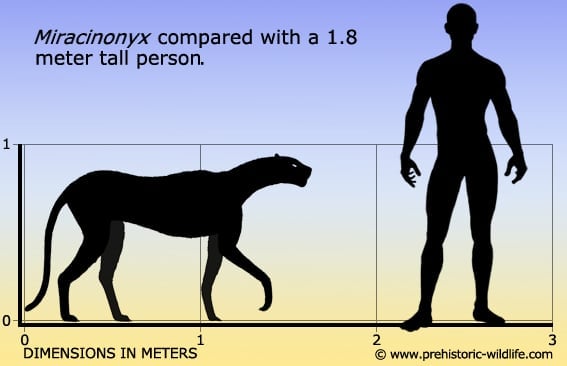
The
presence of Miracinonyx in North America is taken
as a case of amazing
convergent evolution. This is because Acinonyx,
the African
cheetah, is not thought to be related to Miracinonyx,
yet
Miracinonyx still evolved a body that was almost
identical to its
African counterpart. This suggests that Miracinonyx
wasn’t hunting
the larger and more powerful megafauna that other big cats were, and
was probably chasing animals like pronghorns (while the cheetah is
usually dubbed the fastest land mammal, pronghorns are actually
strong rivals to this title, and can actually maintain high speeds
longer than cheetahs can).
Miracinonyx
was well suited to life as a sprinter with some species having
partially retractable claws which meant that the claws did not slide
back when not in use (say, like a house cat). These claws would
have always been in contact with the ground, and like running spikes
they would have offered increased traction for faster and more
efficient locomotion. Miracinonyx also had an
enlarged nasal cavity
that allowed for a much faster rate of respiration so that its muscles
would not tire so quickly while running.
8 - Crocuta crocuta spelaea - a.k.a. Cave Hyena
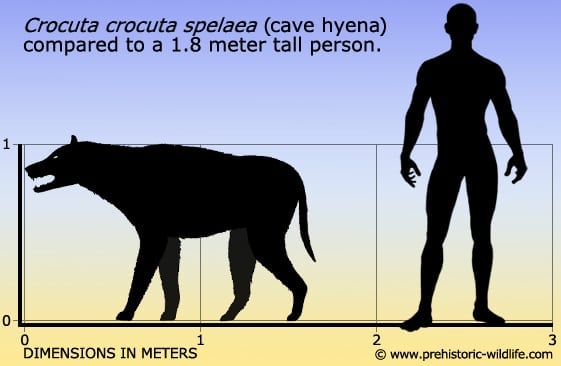
Today
spotted hyenas are actually more feared than lions by some people,
but as recently as eleven thousand years ago a slightly larger sub
species called Crocuta crocuta spelaea
(sometimes classed as
Hyena spelaea) was one of the dominant carnivores
of Pleistocene
Eurasia. Popularly called the cave hyena this animal seems to have
scavenged most animals like hyenas do today, while also having a
penchant for hunting wild horses as well as woolly rhinos like
Coelodonta.
Cave hyenas also seem to have been capable of taking on
some of the most dangerous animals of this time such as the cave bear
Ursus
spelaeus, although these may be cases of
scavenging.
The
cave hyena like its modern counterparts is known to have attacked and
eaten early homonids like Neanderthals that cave hyenas would have also
competed with for cave space. Cave hyenas have also been seen to be
the reason why early humans could not cross the Bering Strait into
North America. Evidence to support this comes from the first signs of
Human settlement in Alaska coming from roughly the same time that the
cave hyena disappeared.
7 - Homotherium
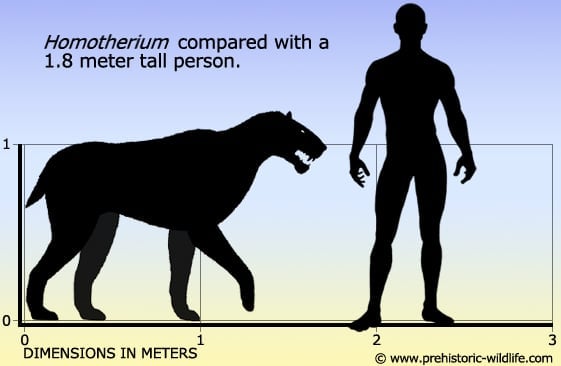
Although
a big cat, Homotherium was closer to a hyena in
its main body
proportions which saw it having much longer front legs that resulted in
a sloping back. As a scimitar-toothed cat Homotherium
had enlarged
upper canines similar to Smilodon, although not
so large that they
extended past the lower jaw. These teeth also had serrations that
meant they could easily slice through the tough hides of prey,
causing grievous wounds that poured blood. This blood loss would
incapacitate prey more effectively than if Homotherium
struggled with
it.
Homotherium
would have likely eaten a variety of animals when able, but as a
genus it seems to have had a particular preference for juvenile
mammoths. Mammoth remains, sometimes in large quantities, are
always known from areas where Homotherium has been
found, sometimes
in very close association. In Pleistocene times these areas would
have been grassy plains and steppes, but Homotherium
would have
had an advantage thanks to its long legs that not only allowed for more
energy efficient locomotion, but extra reach on large prey like
juvenile mammoths.
6 - Thylacoleo - a.k.a. the Marsupial lion
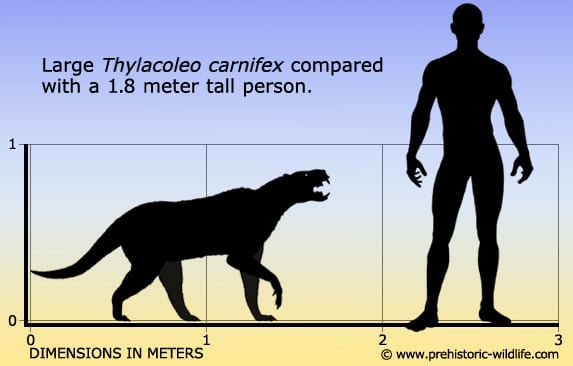
Today
Australia is world renowned for the large number of marsupials that
live there, but back in late Pliocene and Pleistocene periods a huge
predatory marsupial named Thylacoleo was one of the
apex predators of
the land. Thylacoleo has some of the most
specialised killing teeth
on this list which were oversized incisors that could slice through the
flesh of other mammals. At one time some palaeontologists suggested
that these teeth were used for cracking things like nuts, and that it
may actually been a herbivore. However new study of other herbivorous
animals has shown distinctive tooth marks that match up to the incisors
of Thylacoleo, once again strongly suggesting
that Thylacoleo was a
predator.
Aside
from the teeth Thylacoleo also had retractable
claws. Because the
claws were retracted when Thylacoleo was just
walking they remained
sharp so that they could be used for extra grip upon prey.
Additionally Thylacoleo also had an opposable
thumb for even more
grip, although it has also been suggested that these features may
have been adaptations for climbing.
5 - Panthera leo atrox - a.k.a. the American Lion

One
of if not the largest lion in the fossil record, the American lion
was one of the dominant predators of late Pleistocene North America.
Similar to its modern day counterpart the African lion, the American
lion would have hunted a variety of animals by using ambush tactics
to surprise and take down prey. However unlike the modern African
lion, it is not certain if it was a solitary or group hunter as
although interpretations of fossil evidence support a solitary
lifestyle, they do not conclusively prove that it only hunted alone.
On a side note however, cave art that depicts the slightly smaller
but closely related Eurasian cave lion (Panthera
leo spelaea)
depicts this lion hunting in groups which could hint to similar
behaviour in the American lion.
The
American lion has had and currently still has a complicated position
amongst other big cats as while most treat it as a sub species of the
African lion, others continue to class it as its own distinct
species. Unfortunately the fossil record is no clearer either since
the closest lion to the American lion, the Eurasian cave lion, also
has a similarly complicated taxonomic history.
4 - Hyaenodon

No modern relatives of Hyaenodon remain today as the creodont mammals that Hyaenodon belonged to waned and disappeared in the face of competition from the newly emerging dogs and big cats. In its day though Hyaenodon was one of the most devastating predators on the landscape that hunted everything from primitive horses to primitive rhinos, back before they even came close to the sizes that they grow to today. Key to Hyaenodon’s success was the immensely powerful crushing jaws which seem to have been used to literally crush the skulls of its prey. In addition to these jaws, Hyaenodon had slicing teeth at the back of its mouth that continually sharpened themselves throughout the animal’s life. This was achieved by the top and bottom teeth rotating against each other as the animal grew older so that they constantly ground together to produce a sharpened edge. This meant that even in old age, Hyaenodon could comfortably feed from animals while other older predators with badly worn teeth starved.
3 - Canis dirus - a.k.a. the Dire Wolf
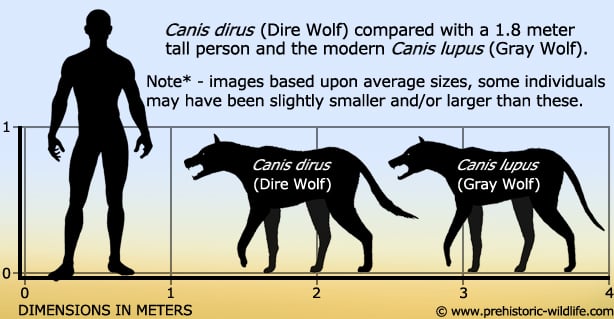
Probably the most well-known and famous of the ancient wolves and with a name that means ‘dire’, Canis dirus is usually depicted as a monstrous hulking wolf much bigger than a person. In realty however the skeleton of Canis dirus wasn’t that much bigger than its relative Canis lupus, better known as the grey wolf that can be seen running around wild in parts of the northern hemisphere today. However, Canis dirus was a far more powerful wolf as indicated by the more robust bones and attachments for larger muscles. This pointed towards a specialisation towards much larger prey, much like its rival the sabre-toothed cat Smilodon ( which Canis dirus would have shared its habitat with. What many people also do not realise is that Canis dirus and Canis lupus actually co-existed on the same landscape until the disappearance of the North American megafauna towards the end of the Pleistocene. With the large prey gone, Canis dirus found itself hunting animals that were faster and providing less sustenance when caught, which resulted in its more powerful body actually becoming a hindrance. This is why Canis lupus, which is lighter and faster survived while Canis dirus went extinct.
2 - Amphicyon - sometimes just called Bear dog
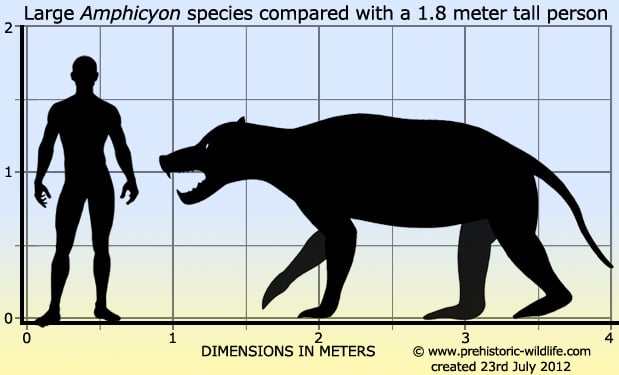
Amphicyon
had a number of things going for it as a predator including large
size, legs for running, powerful jaws and a greater level of
intelligence over the predators that were previously at the top of the
food chain before the appearance of bear dogs like Amphicyon.
These
adaptations were not just to compete with existing predators however,
but to take down larger, more powerful and faster running prey
animals that were replacing the previous prey.
Despite
the fact that Amphicyon was a powerful animal, it
would itself be
replaced by even more intelligent predators such as the early dogs that
would go onto develop new hunting strategies and behaviour.
1 - Smilodon - a.k.a. the Sabre-toothed Cat
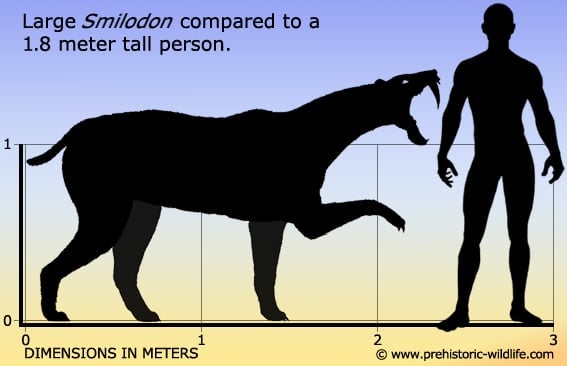
Without
doubt the most famous of the mammalian prehistoric predators,
Smilodon has been regularly depicted in both
documentaries and fantasy
pop culture alike. Smilodon itself however was a
specialised predator
of large and powerful animals, with in depth tests revealing it had a
preference for hunting bison. To deal with such large animals,
Smilodon had a very powerfully built forward body
that allowed it to
grip hold of the animal as it delivered a killing bite. The enlarged
sabre-like canine teeth that gave Smilodon its name
were certainly the
killing weapons that finished its prey, but they were also
surprisingly weak and Smilodon would have had to
first subdue its prey
by physical force before delivering the fatal bite.
Although
so far not known for certain, the large number of Smilodon
remains
from the La Brea Tar Pits in California suggest that this cat may have
hunted in packs, possibly family groups similar to today’s Lions in
Africa. This fits into the fact that large numbers of dire wolf
(see below) remains have also been recovered, while presumably
lone carnivores such as bears are only known in very small numbers.
Quick mentions
Arctodus
- a.k.a. the Short Faced Bear
Arctodus
has not made the list on the grounds that fossil evidence strongly
suggests that it was a specialist scavenger and not a predator that
made an effort to actually kill its own prey. Much more detailed
information about this is on the main Arctodus
page, just click the
link above.
Livyatan
& Basilosaurus
These
are whales and as such are obviously mammals, but this list is more
about terrestrial carnivores. More information about these whales can
be found on their pages, as well as on top
ten marine predators.
----------------------------------------------------------------------------
Random favourites
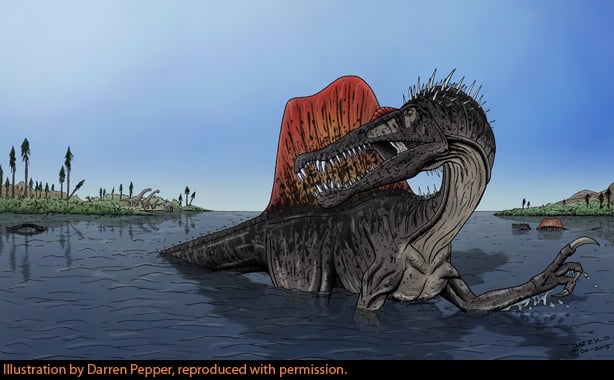 |
 |
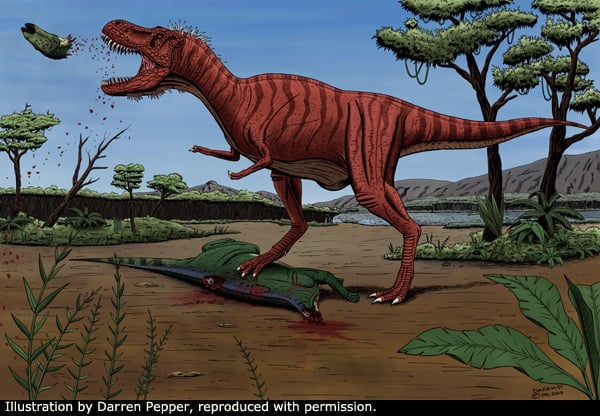 |
